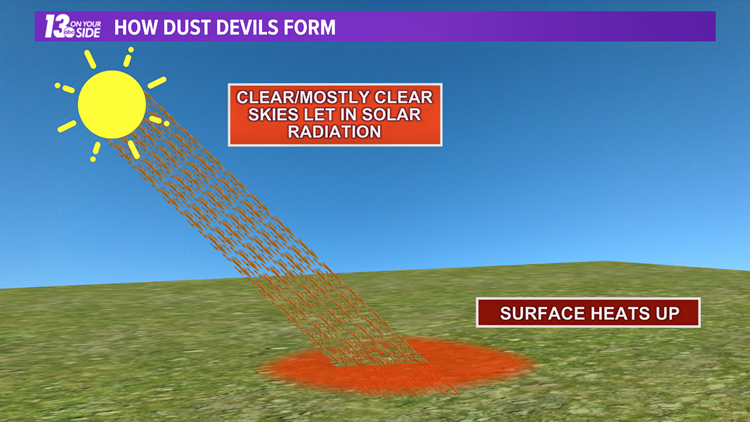GRAND RAPIDS, Mich – Dust devils, they are usually harmless whirlwinds that make for a bit of excitement on a sunny afternoon with clear skies and warming temperatures. But sometimes, these circulations can grow a bit too large and unwieldy for comfort.
That was the case with one dust devil Thursday afternoon May 13th in West Michigan. While many devils were reported that afternoon, this one caused damage. Several nursery structures at the Lincoln Nursery in Grand rapids were torn apart as winds whipped around the facility.
No one was injured in the event, but the photos of the damage were impressive.
You can see those in the gallery below.
The next question for many after seeing images like this, is how do these dust devils form?
Well, to firstly address one area of concern, these are not tornadoes. Some of the physics involved with the rotation of the air column may be similar, but their formation and the factors leading to their continuation are very different.
A dust devil usually forms in an area of flat terrain on a warm and sunny to mostly sunny afternoon, with light winds and colder air aloft in the atmosphere. The sun will heat the surface causing air at surface level to warm more rapidly than the area further aloft.
This difference in heating will lead to rising air via convection. Given the right circumstance, this rising air will begin to rotate and form a circulation.
This circulation will be fed and sustained by warm air coming in from the surface level. Dust devils can last for seconds or minutes, and may be small in scale or large enough to resemble a smaller tornado.
The dust devil will begin to weaken as colder air begins to mix in. This colder air will lead to a disruption to the equilibrium creating the circulation, leading to its dissipation.
While mostly harmless, as mentioned above, dust devils can sometimes cause damage. It is recommended that you avoid wondering into the circulation as flying debris, at the very least, could cause irritation to your skin or eyes.
However, it is recommended that you snap a photo or video when you see one, and be sure to send it our way as well!
— Meteorologist Michael Behrens
Follow me on social media! Facebook Meteorologist Michael Behrens, Twitter @MikeBehrensWX, and Instagram @MikeBehrensWX.
Email me at: MBehrens@13OnYourSide.com
Have a 30-second video or still photo to share? We’d love to share it with everyone! Email your image to Weather@13OnYourSide.com or post it to our 13OnYourSide Facebook Page.
►Make it easy to keep up to date with more stories like this. Download the 13 ON YOUR SIDE app now.
Have a news tip? Email news@13onyourside.com, visit our Facebook page or Twitter. Subscribe to our YouTube channel.
